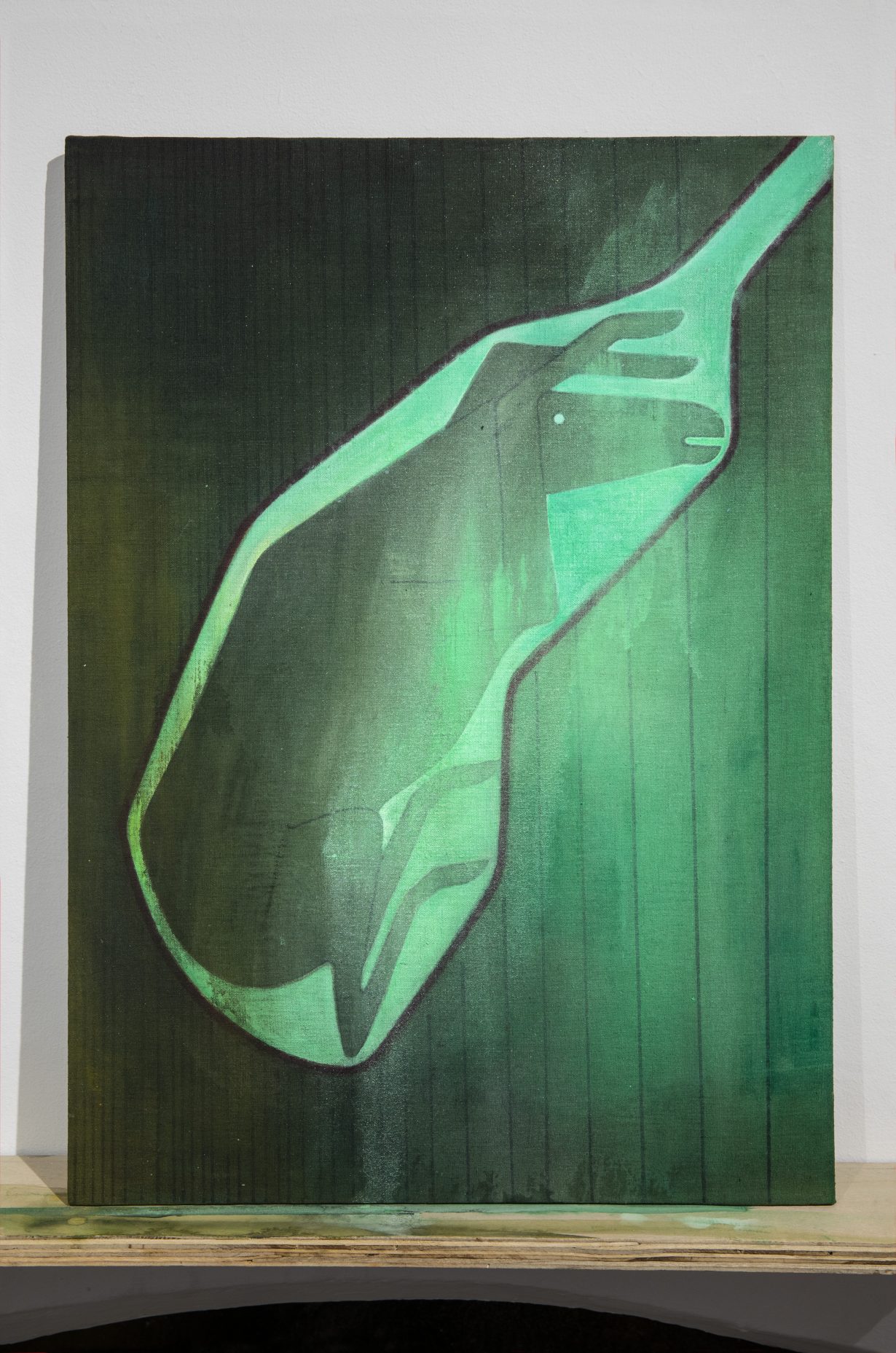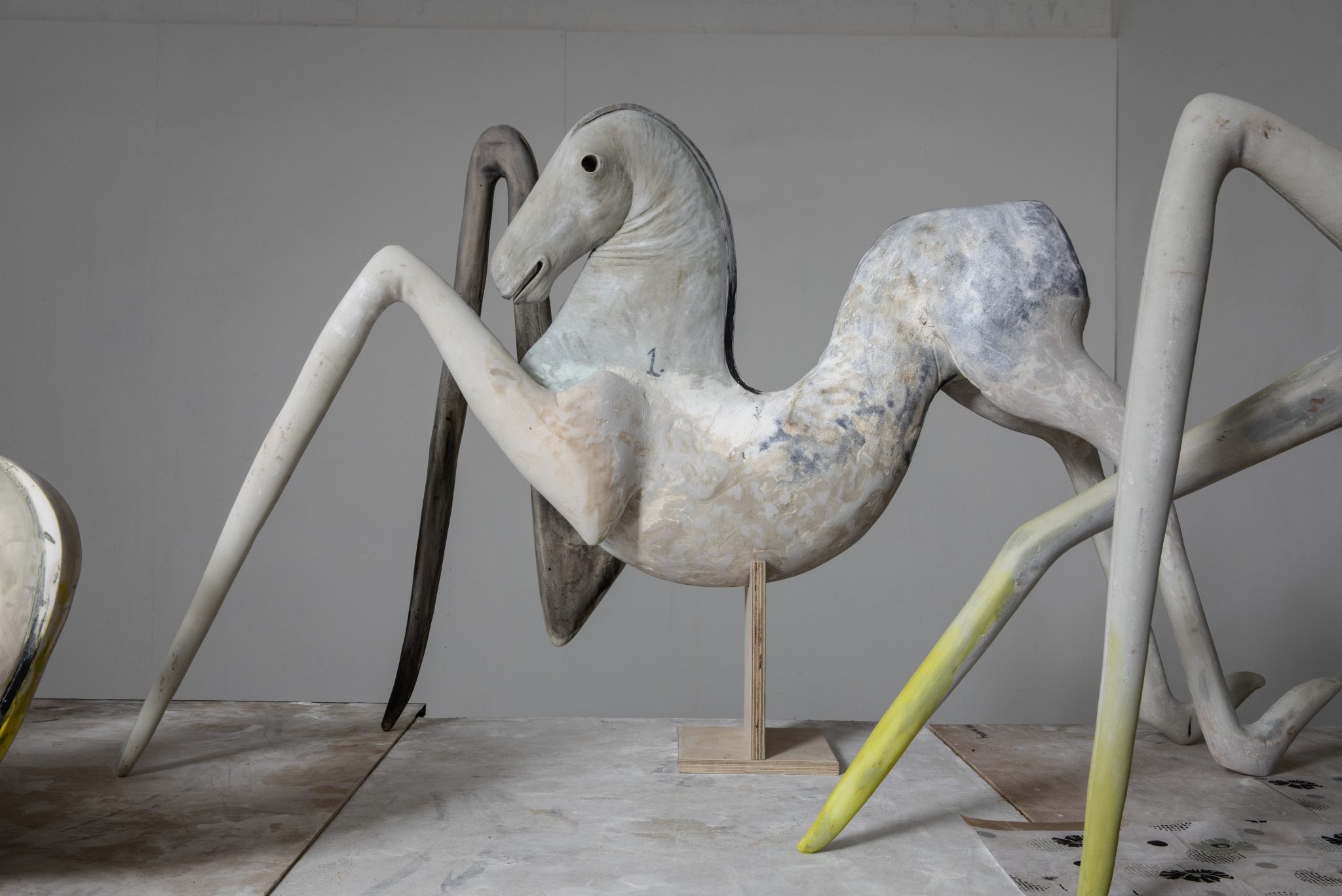Weird Horses at Karsten Schubert, London rebirths the form as something tentative, tender and conceptually fleet of foot
If equestrian sculpture is a genre we most readily associate with a pompous and bloodthirsty imperial past (think Joseph Boehm’s huge 1888 bronze of the mounted Duke of Wellington at London’s Hyde Park Corner), then in Cathie Pilkington’s Weird Horses it’s reborn as something tentative, tender and conceptually fleet of foot. On the Table (all works 2023) is a large two-tier wooden workbench filled with near-lifesize plaster, resin, cloth and straw sculptures of infant foals, their eyes drilled voids, their pale unpainted limbs marked with felt-tipped words (‘stumble’, ‘fallen’), like potsherds labelled during an archaeological dig.
None of the sculptures read as complete. Some have missing heads or hooves, or have been assembled from mismatched body parts. Others seem to be mutating into praying mantises, their zigzagging forelegs terminating in sharp cruel spikes. Is this a defence mechanism? With their plump exposed hind-quarters and ingenuous smiles, many of these foals feel disturbingly vulnerable. Then there are the piles of broken limbs on the bench’s lower tier, tangled up with strips of glittery plastic, which echo the sparkly cabaret curtain hung incongruously on a nearby wall, perhaps a reminder of the ambiguous place horses occupy in our cultural imaginary: if the artist’s show nods towards the rearing Classical stallions of the Parthenon frieze, then it also winks at the gentler candyfloss world of the My Little Pony: Friendship is Magic (2010–19) franchise.

It’s unclear whether Pilkington’s bench is site of creation, conservation or hybridisation; if the foals are in the process of being made, repaired or subjected to some brutal, Doctor Moreau-like experiment, which overwrites their original form, and with it their (art historical) meaning. The answer, of course, is none of the above: they’re not fragments from a lost past, but rather contemporary sculptures that have achieved their intended degree of finish. Nevertheless, Weird Horses is a show haunted by the struggle to birth the new from the old, something fresh and untainted from something exhausted and irreparably compromised. Pilkington’s sequence of 12 small diagrammatic and mutedly luminous paintings, collectively titled Spectrum, depicts equine foetuses in utero. While their bodies have grown to full term, their limbs are arranged in such a way as to make their imminent passage into the outside world hazardous for both mare and foal. The background of each work is marked with thin horizontal or vertical stripes, like a readout from a flatlining monitor. These paintings seem to ask whether Pilkington’s plaster horses can reincarnate the dead genre of equestrian sculpture, or if they’re fated to come into the world stillborn.
Weird Horses at Karsten Schubert, London, 21 April – 27 May
